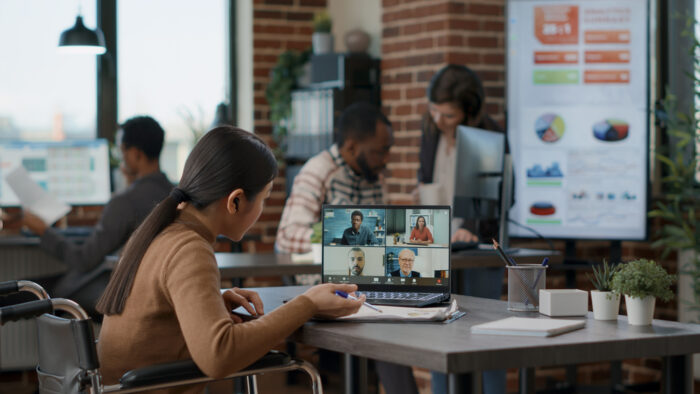Recent events have led to the popularity of remote workstations. It is estimated that more than 30% of employees would prefer pay cuts but remain with the options of working from home. However, most organizational leaders stressed the importance of workers returning to their desks to maximize output. Merging the various needs of management and employees has led to the rise of hybrid offices to encourage human interactions while allowing the flexibility of working from home.
A hybrid office model can facilitate remote and in-office work. Furthermore, it is expected to become the ordinary way of life for most white-collar employees.
Eight Essentials
The hybrid office design aims to create spaces that support different working preferences beyond physical and social barriers. There are other factors to consider when designing an office to meet the needs of every person using one. Here are eight essentials to consider for a hybrid office layout:
1. Assigned Workstations
In most organizations, some roles require designated workstations. To avoid chaos and conflict, it is crucial that a hybrid office setup assigns specific desks for employees whose roles need permanent workstations.
On the other hand, disputes involving office furniture and workspace should be avoided if you value efficiency. Hence, assigned workstations are ideal for employees who work in the office full-time and who requested specific workstations.
Additionally, senior roles may be factors to consider when assigning fixed workstations for your employees in a hybrid work environment.
2. Hot-Desking
Under hot-desking, employees can choose from a pool of desks at any time. Hot-desking is ideal for staff that split their time between the office and working remotely. It also encourages maximum use of company resources and facilitates cost-savings. For instance, hot-desking eliminates the need for big offices full of furniture that is often inadequately utilized.
For successful hot-desking, it is best to install a booking system that allows your employees to book desks for the days they plan to work in the office. A booking system eliminates instances of employees coming to the office and missing workstations.
A booking system can also be beneficial for employees that need to make recurring reservations, especially when they need routine. Employees feel a sense of ownership when they have allocated spaces to leave their items as they attend to their daily activities.
3. Movable Workstations and Partitions
Having office furniture your employees can move around in a hybrid office is essential. For instance, it allows employees to configure their chairs to form a unit while brainstorming or discussing a group project. It also allows employees to pull away when they need to work individually.
Adding a few movable partitions is advisable, especially for employees who prefer privacy while working. When social distancing becomes a requirement, movable workstations make it easy to comply since they are easy to separate.

4. Outdoor Office Spaces
The outdoors offers the employees opportunities to be surrounded by fresh air. Sunlight and fresh air boost concentration and mood and reduce stress. If you have underutilized outdoor space, re-designing it for employees’ use can encourage them to come to the office.
Meanwhile, while re-designing your outdoor space, create room for tables and seats to accommodate people who need to work as a group or individually.
5. Kitchen Space
Consider creating a communal kitchen where employees can have lunch while catching up with co-workers. Such space allows colleagues to reconnect more personally. You can install essential kitchen appliances like a coffee maker, a microwave, and a fridge. A few comfortable kitchen stools can go a long way in creating a relaxed environment for your employees.
6. Conference Room
Even hybrid offices still need conference rooms. Therefore, consider a designated space that can accommodate a long table and chairs, and make it your conference room. Smaller, intimate tables accommodating 6 to 8 people are ideal.
Although most meetings occur virtually, nothing beats holding a one-on-one physical meeting occasionally. Since video conferencing is still significant, you can install conference equipment like a large digital screen, cameras, and microphones to rope employees in connecting via other channels.
7. Private Spaces
Modern phone booths are still essential in a hybrid office. Such spaces allow small group meetings where your teams can interact virtually with clients through numerous platforms, including Zoom and Blue Jeans.
8. Refuge Space
It is typical for a team member to get overwhelmed while at work and need a place that allows some quiet time, enabling him/her to calm down. A refuge space in your hybrid office shows your employees that you care about their well-beings. You can include a small library or meditation area for this space.
Conclusion
Hybrid office designs will continue to be one of the future office trends, because they increase collaboration while improving relationships between co-workers. Hybrid offices also reduce overhead costs, and their acceptance and adoption will continue to grow.
If you are considering setting up a hybrid office design, it is essential to consider the needs of everyone using it. For the perfect hybrid office layout, seek help from professional office interior designers for a layout that will suit your business needs.
Find a Home-Based Business to Start-Up >>> Hundreds of Business Listings.
















































